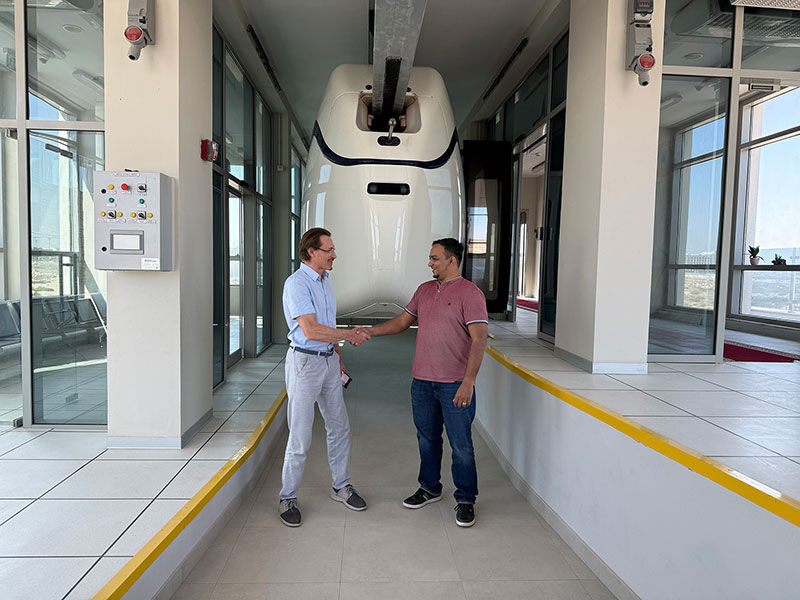Intelligent control system in uSky transport & infrastructure complex
- author

- Apr 26, 2022
- 4 min read
[26.04.2022]
uSky Transport does implement innovative, eco-friendly, safe off-the-ground transport complexes.

uSky transport complex is a composite system with an almost infinite life cycle. Depending on external and internal conditions, tasks to be solved, and other factors, it may be composed of a large number of components such as various electric vehicles, overpass track structure, security systems, multi-purpose infrastructure (transport, information, energy), etc.

That said, the transport complex should operate in a highly loaded intensive mode, serve major passenger and cargo flows, operate in a variety of climate zones and a wide range of environmental conditions. When in the operation (even within a day), the transport complex can quite dynamically change its composition and configuration. Its structure and composition can keep continuously optimizing. Components for various reasons can be excluded from the complex, replaced with new ones, change their functionality and modes of operation.

For efficient and safe control of the transport complex, it is completed with intelligent control system (ICS). Depending on the structure of the transport complex, its parameters, characteristics and purpose, the ICS composition may vary along with the tasks it solves. ICS may feature the following hierarchical structure and include:
central intelligent control system – process control system in the transport complex as a whole;
intelligent depot control system – depot processes control system;
intelligent station control system – passenger transportation processes control system within the stations’ scope of responsibility;
intelligent terminal control system – cargo transportation processes control system within the freight handling terminals scope of responsibility;
control system members located in the track infrastructure;
intelligent vehicle control system, which in turn consists of onboard intelligent control system and onboard control system.

The communication of the vehicles with other members of the transport complex can be implemented via high-speed wireless channel provided by a system of base stations located on the transport complex members. The intelligent control system should provide the solution for the following tasks:
carry out prompt data collection and processing for the live state of the transport complex;
automatically calculate the logistics routes for the delivery of goods and passengers, develop and adjust EV routes, optimize traffic flows;
forecast eventual changes in traffic flow and choose the best solutions for the transport complex operating modes;
adjust the traffic depending on the situation on the transport network and ridership;
based on the collected and processed data, forecast eventual problems and implement corrective preventive measures;
inform the relevant services in case of emergencies and natural emergencies.

To solve the above tasks, the control system must have sufficient, accurate and up-to-date information on the state of all components of the complex, i.e. possess the features and functionality (cybernetic models) of real objects. As a database, electronic licences can be used as part of cybernetic models of real objects.
A licence is the most vital part of the operational documentation of a technical device, since it contains the data certifying manufacturer’s warranties, main parameters and properties of the product, as well as information about the certification and disposal. In transport industry, a vehicle licence, a vehicle chassis number are in practice for instance depending on the type of machinery. The existing paper versions of licences suffer from a number of significant drawbacks that reduce the reliability, safety and economic efficiency of the system during operation.
These problems can be avoided by placing the licence data in a single information space creating electronic documents and a relevant system. This would allow to solve the above cons and has a number of additional pros. The electronic vehicle licence allows you to quickly receive a wide variety of information on any specific vehicle. Such a licence unlike a paper one, has practically no restrictions on the quantity of stored data, so it can record many times more data about the real state of the technical device, parameters and characteristics. This allows one to create a multifunctional system for tracking technical equipment throughout the entire life cycle.
An electronic licence is capable to record the current state of an object, and not the factory stage condition only, which allows one to manage objects more efficiently. The use of e-licences should not be limited to vehicles. Their scope is the entire transport complex. Any uSky component can be classified as a complex technical device, which means that it requires a licence or a similar document or recording. Under loaded operating modes of uSky complex, each of its components must work smoothly and consistently.
Thus, under certain conditions, e-licences can be considered as a statistical and analytical information database that is part of a cybernetic model of real objects. To deal with e-licences, it will be necessary to create a specialized automated system as one of the subsystems of the intelligent control system.
It is of high importance that this system is capable of significant reduction of the criminal threat. Such a system will not allow issuing false licences, duplicates, or documents, which do not meet safety requirements and regulations. Any operation with e-licenses will be executed after full verification of the person acting, his access rights, powers recorded and signed with an electronic signature.

Thus, we can conclude that the task of introducing e-licences and creating a specialized automated system is relevant, corresponds to global trends, and may be categorized as innovative. The use of such a subsystem in uSky Transport and Infrastructure Technology is justified and expedient since at present uSky Transport is ready to shift from design and testing stage to mass production and open commercial sales on the international market.



